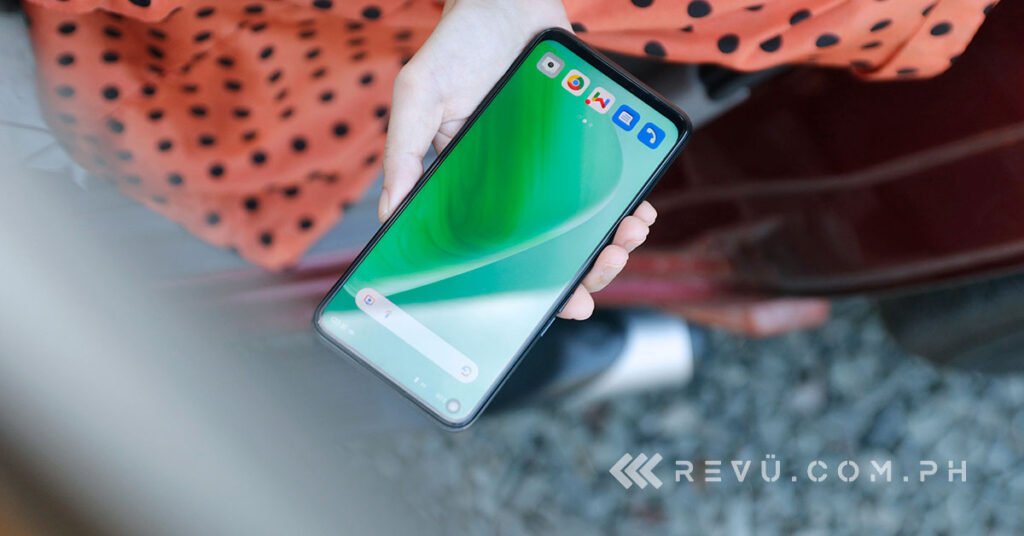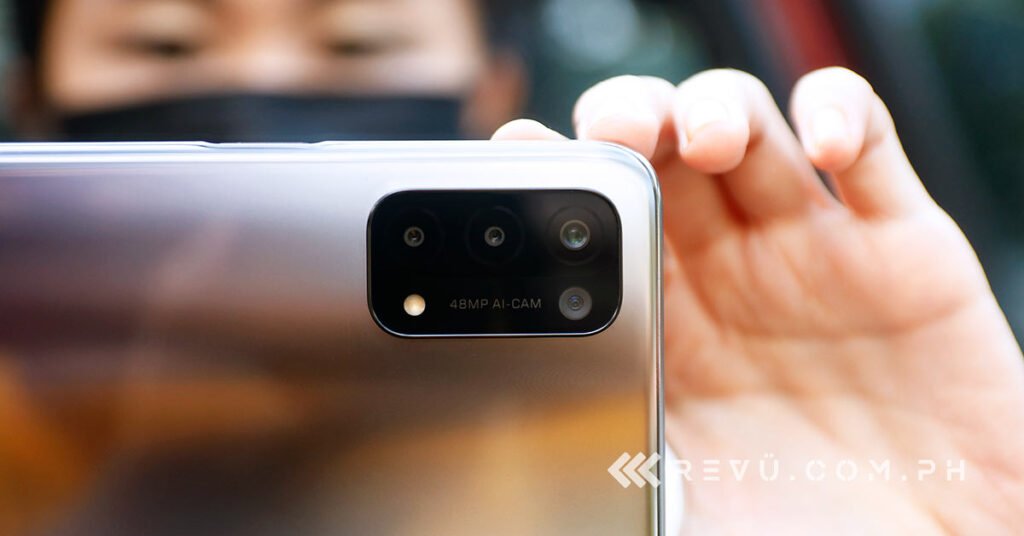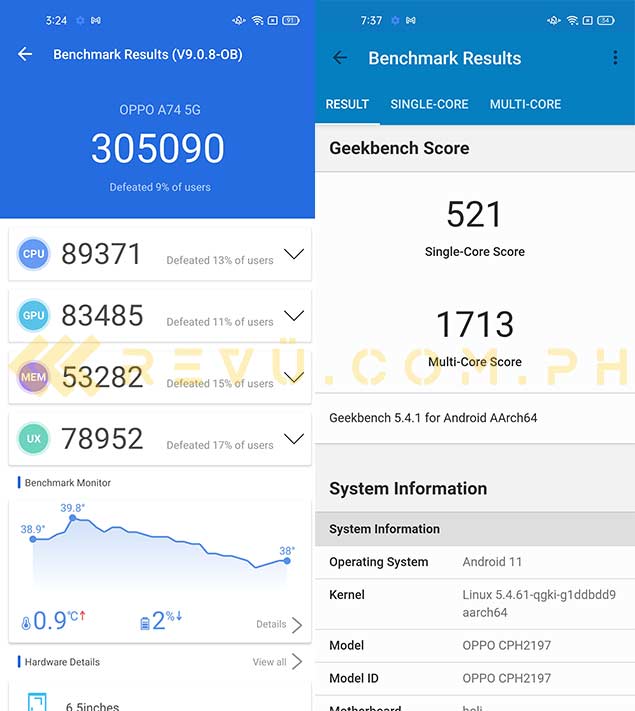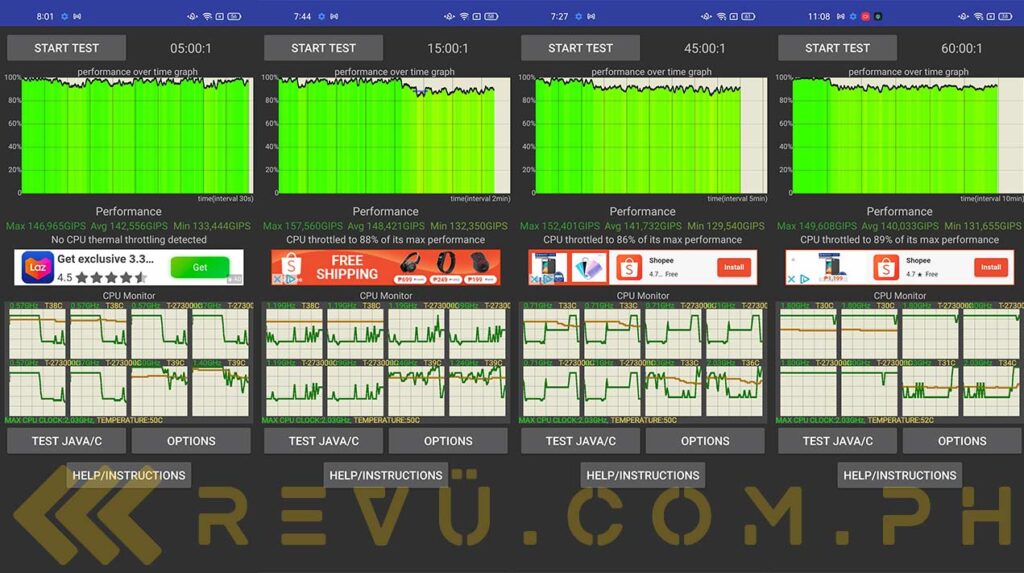Estimated reading time: 12 minutes
With 5G phones in the low-to-midrange price segments becoming more and more common, OPPO recently decided to release the 5G variant of the A74 globally, including the Philippines.
Locally, the latest — and fastest — network standard is available in many parts of the country’s capital region, so getting a 5G phone like the OPPO A74 5G now will allow you to take advantage of faster networks as they roll out in your area.
Of course, that’s not the only advantage the A74 5G model has over the vanilla model. It sports a slightly bigger display with a higher, 90Hz refresh rate, albeit at the cost of AMOLED. It also adds a dedicated ultra-wide camera at the back for landscapes and group pictures, plus a more powerful chipset in the Qualcomm Snapdragon 480 5G.
Priced at P15,999 (roughly $336 converted) in the Philippines, is the brand’s most affordable 5G phone in the country a worthy upgrade? Read our full review of the OPPO A74 5G to find out.
Understated hardware with 90Hz refresh
The OPPO A74 5G sports a plastic body with a glossy finish in solid silver or gradient black or gray-ish, which OPPO calls Fluid Black. The Space Silver variant features a less flashy design, but both color options look good in pictures and in person. Neither comes across as too loud to look at. If given a choice, we’d pick the black A74 5G that we used for this review because it’s a little more eye-catching yet still subdued enough with its selection of hues.

Our OPPO A74 5G in Fluid Black review unit is eye-catching yet still subdued enough with its selection of hues
The phone’s width is just right for one-handed use, but its extended display makes reaching the top of it a bit uncomfortable. The extra weight and thickness of the unit are not particularly surprising and justified to accommodate the 5,000mAh battery, plus additional antennas for 5G coverage.
In typical OPPO fashion, the right-hand side of the device houses the power/key button, whereas the volume keys and hybrid-card tray are located along the left edge. The former gets an embedded fingerprint reader, as usual, to help you avoid the hassle of manually keying in your password. It’s fast and reliable, and it’s exactly where it needs to be if you’re right-handed, not too far up or down the right side of the smartphone.

The power button gets an embedded fingerprint reader to help you avoid the hassle of manually keying in your password
As for the card tray, it can accommodate two nano SIMs and one microSD card simultaneously, giving you the option to use two mobile numbers at the same time and switch between 5G networks depending on which operator offers better service in your area.
Up top, the handset is bare, not even a second microphone for noise cancelling during calls. All the ports — a USB-C port for charging and file transfer and a 3.5mm headphone jack for legacy audio devices — as well as the single loudspeaker can be found at the bottom.
Moving to the front, the OPPO A74 5G packs a 6.5-inch LTPS or low-temperature polysilicon LCD screen that, compared to traditional LCDs, helps lower power consumption and results in a higher pixel density, and therefore a sharper image. Like many other OPPO phones, there’s a punch-hole cutout on the upper left for the selfie camera.
The panel has a resolution of 2,400 x 1,080 with a wide aspect ratio of 20:9. It can get pretty bright, too, offering up to 480 nits of peak brightness in Auto mode, so you can use it outdoors without needing to squint at the screen.
And it does look good when in use, capable of pleasing detail, accurate colors, and wide viewing angles one would usually associate with LCD panels at this price range. However, we don’t think it’s the best choice for value, especially if you’re after the vibrancy and deep black levels of an AMOLED display.
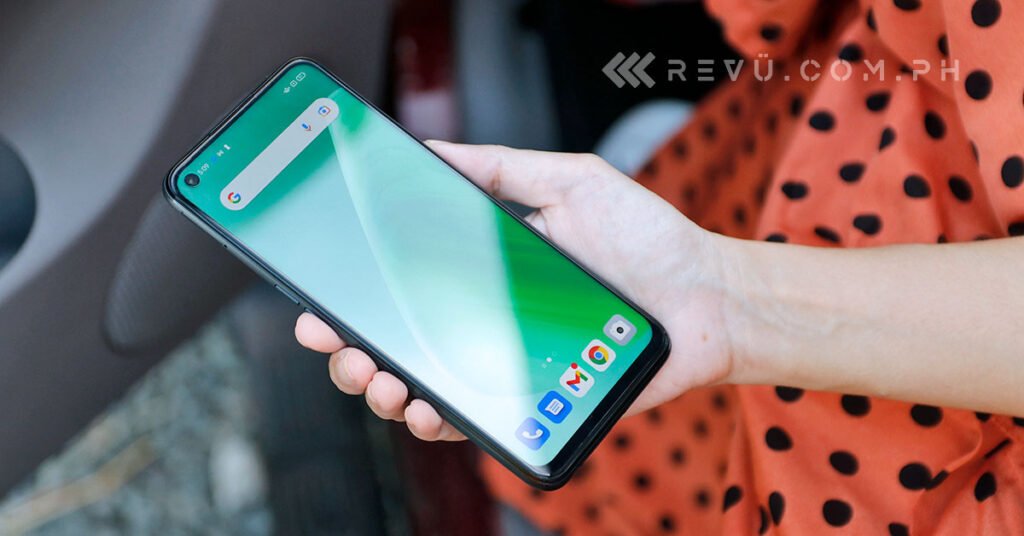
The A74 5G’s 90Hz refresh rate makes OPPO’s latest Android 11-based ColorOS 11 user interface, in particular, look more fluid
Perhaps the best spec here is the A74 5G’s 90Hz refresh rate, which isn’t standard fare for most OPPO devices even in 2021. This makes OPPO’s latest Android 11-based ColorOS 11 user interface, in particular, look more fluid, especially when scrolling up and down the screen. When playing games, don’t expect the same smoothness all the time, as the display seems to max out at 60Hz due to the limitations on the chipset. Out of all the games we tried, only Dead Cells and Alto’s Adventure ran at a frame rate higher than 60 fps.
Still, even with its utility limited to the UI, using a 90Hz screen feels way nicer than a 60Hz one. And we can’t really fault OPPO for the Snapdragon 480 5G’s gaming performance, which falls in line with the Snapdragon 720G and most midrange chipsets on the local market.
Great quad cameras
The OPPO A74 5G adopts a quad-camera setup with a 48-megapixel, f/1.7 camera alongside an 8-megapixel ultra-wide shooter and 2-megapixel macro and depth sensors in a rectangular module. The lone selfie shooter has 16 megapixels. Minus the wide-angle option, those specs are virtually identical to those of the A74 version that doesn’t have a 5G chipset.
In the daytime, pictures turn out bright, detailed, and sharp, while Auto HDR helps balance scenes, taking care of shots that are in danger of over- or underexposure. The camera package here is decent for low light, too, with the option to take brighter images in Night mode, which is available on the main, ultra-wide, and front-facing cameras.
You can’t save RAW files in Expert or manual mode, which would work great in post processing. But you do get a helpful pop-up screen to explain what each camera setting does and how to approach a specific scene.
Elsewhere, the 16-megapixel front-facing camera is a capable shooter that delivers plenty of detail and sharpness, in addition to accurate skin tones. It also captures nice self-portraits with good edge detection in daylight that will survive close inspection. Most of the included filters look nice, too, but the software extras here pale in comparison to what competing phones offer.
Shot on the OPPO A74 5G: 1) Ultra-wide; 2) 1x; 3) 2x zoom; 4) 6x zoom; 5) Ultra-wide; 6) 1x; 7) 2x zoom; 8) 6x zoom; 9) 2x zoom; 10) Macro; 11-12) Auto; 13) Night mode; 14) Expert mode; 15) Expert mode with filter; 16) Expert mode; 17) Expert mode with filter; 18) Auto; 19) Portrait mode; 20) Portrait mode with filter; 21) Auto; and 22) Portrait mode
And one more…
The OPPO A74 5G supports video recording at up to 1080p at 30 frames per second with its rear and front cameras and up to 720p at 30 fps with its ultra-wide option. While not being able to shoot in super-sharp 4K is completely understandable, our biggest gripe is the lack of 60 fps shooting.
Powered by Qualcomm’s first 4 series chip with 5G
The OPPO A74 5G runs the latest Qualcomm Snapdragon 480 5G SoC and is the first device to do so in the Philippines. We’re pretty excited with this particular chip, in large part because it’s the cheapest Qualcomm silicon with a 5G modem. Besides 5G, it also introduces the 4 series to the 8-nanometer process, allowing for remarkable efficiency when handling serious workloads.
It uses an integrated Qualcomm Snapdragon X51 5G, which supports multiple 5G spectrums, modes, and frequencies at lightning-fast peak download and upload speeds of 2.5Gbps and 660Mbps, respectively. Both mmWave and Sub-6 GHz spectrums are supported, as well as SA and NSA modes.
Our review unit can connect to 5G networks in the Philippines without any problems, and the results we saw using the Ookla Speedtest app and Netflix’s Fast were comparable to other similarly priced 5G phones we’ve tested in recent months. As far as speed and coverage are concerned, there’s really nothing to complain about with the OPPO A74 5G.
5G speed tests on the OPPO A74 5G
The Snapdragon 480 5G mixes two performance Kryo 460 cores clocked at 2GHz with six 1.8GHz ones for less demanding tasks. The Kryo 460 cores are semi-custom Cortex-A76 CPU designs supplied only to Qualcomm. For graphics work, the Snapdragon 480 packs an Adreno 619 GPU, which is also included in the Snapdragon 750G 5G that has faster Cortex-A77 CPU cores.
The benchmark scores are quite impressive, especially considering where the Snapdragon 480 5G ranks in the bigger scheme of things. The results we got were not of a typical 4 series chipset, but given the specs, these numbers are expected.
Performance-wise, the Qualcomm Snapdragon 480 5G is similar to the 4G-only Snapdragon 720G, though that is a credit to the former more than a knock on the latter. In going toe to toe with one of Qualcomm’s most popular midrange SoCs, the Snapdragon 480 5G has shown that it can punch above its weight.
But is it a better all-around choice than the equally low-end (among 5G chips, at least) MediaTek Dimensity 700 5G? Not really, especially if you don’t care much about thermal throttling; so far, the Snapdragon 480 5G seems largely unaffected by it.
Gameplay: Genshin Impact, Mobile Legends: Bang Bang (3:01 mark), Dead Cells (6:01 mark), and Alto’s Adventure (9:01 mark)
The A74 5G can play Mobile Legends at a smooth 60 fps with the settings at High. Dead Cells runs at above 60 fps with the frame-rate option unlocked. We were able to maintain close to 40 fps in Genshin Impact with the settings set to Low. And Alto’s Adventure, easily the least demanding game we played on the handset, achieved frame rates as high as 89 fps, essentially maxing out the smartphone’s 90Hz panel.
Our CPU Throttling Test results revealed the OPPO A74 5G dropping to 86% of its max performance at most. There was no throttling detected on the device after five minutes of stress-testing, while its performance dropped to 89% at the end of a 60-minute test.
Those are impressive numbers, to say the least, and it’s important to note that the Snapdragon 480 5G’s 8nm process no doubt plays a significant role in allowing the chipset to perform at peak capacity for longer periods. Given the efficient internals, heat isn’t a problem here. We didn’t encounter any issues, even when gaming for long stretches at a time.
The new ColorOS 11 includes the improved Game Space app, which comes into play if you’re the type of gamer who easily gets distracted by alerts and notifications, or if you simply want to get the most out of the phone’s internal hardware by giving you the ability to switch between Pro Gamer, Balanced, and Low power modes on the fly, for instance.
As far as battery life is concerned, the OPPO A74 5G provides a day or two of mixed use. The 5,000mAh cell should provide a lot more mileage if your typical usage doesn’t involve 5G data and gaming for long periods.
Synthetic benchmarks can be good predictors of real-world performance. Unfortunately, our non-retail unit couldn’t complete a PCMark battery-test run. In our video-loop test, though, the handset played a 1080p YouTube video on loop and lasted 7 hours and 30 minutes from half capacity. The A74 5G ships with an 18-watt charger and requires about 2 hours and 30 minutes plugged in to reach full charge from zero.
Final thoughts
The OPPO A74 5G scores huge wins in the chipset department, capable of blazing-fast downloads in 5G areas and consistently smooth gameplay coupled with solid battery life. The cameras at the back and on the front did good as well in our tests. While the display isn’t as vivid as others at this price level, it produces nice colors and is bright enough for most scenarios.
OPPO’s most affordable 5G phone isn’t the cheapest on the local market, but it’s certainly still a good one. After spending several weeks with the A74 5G, we were smitten with its efficient performance and fluid display. If you or someone you know is on the lookout for an accessible entry-point for the latest and fastest wireless standard in the P15,000 ($314) neighborhood, this is a great deal.
OPPO A74 5G specs
- 6.5-inch IPS LCD display, 2,400 x 1,080 resolution, 90Hz refresh rate
- Octa-core Qualcomm Snapdragon 480 8nm processor
- Adreno 619 GPU
- 6GB RAM
- 128GB storage
- Quad rear cameras: 48-megapixel main, 8-megapixel ultra-wide, 2-megapixel macro, and 2-megapixel depth-sensing
- 16-megapixel front camera
- Fingerprint reader (side-mounted)
- 5,000mAh battery with 18-watt USB-C fast charging
- ColorOS 11.1 based on Android 11
- 162.9mm × 74.7mm × 8.4mm dimensions
- Color options: Fluid Black, Space Silver
Share this Post



